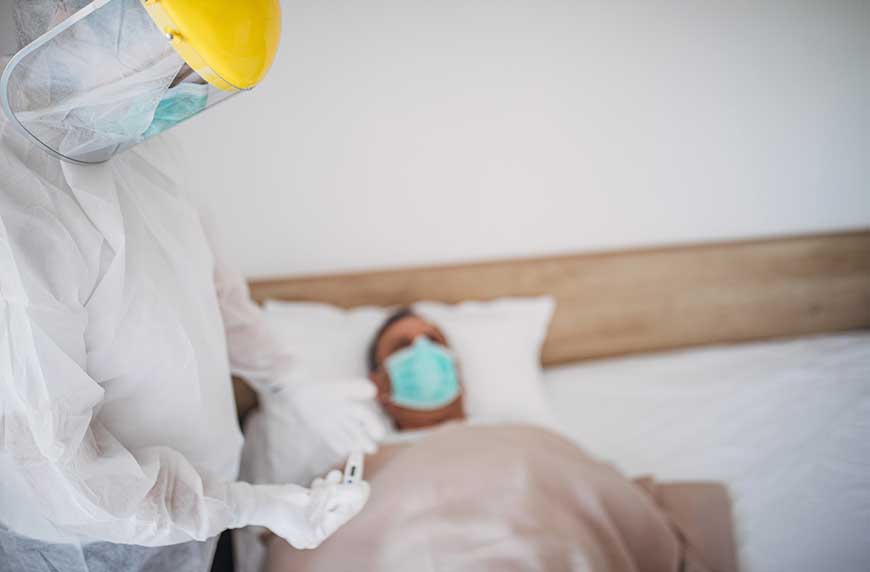Even extensive experience can leave you unprepared for a medical disaster on the scale of COVID-19.
Nurse practitioner Kelly Lueck, who’s fighting desperately to save the lives of her patients in Brooklyn, has plenty of trauma experience under her belt, but the impact of this pandemic has left her reeling. Lueck worked as a paramedic for 12 years, then did ten years as an RN in an ER level-1 trauma center. She’s been an NP for nine years now.
Answering the call
Before the crisis hit, Lueck had only planned on working three locums shifts over the next three to four weeks. But when the enormity of the situation hit everyone, she was quick to answer the call for help. “I was asked if I would come for critical staffing through a friend,” she says. “I said, ‘yes absolutely!’”
Since she arrived in Brooklyn, she’s been working 15-hour shifts every day, with one day off after 15 shifts and two days after 21.
Despite her years of working in EDs and trauma centers, this assignment has been unlike any other. “I’ve just never seen anything like it,” Lueck says. “The problem with COVID-19 is that people are dying in the ER. We’re watching them either dying quickly or dying slowly, and they go from coming in, to coding, to passing — or they are coming in, being discharged home, and return to the hospital and die. COVID is one of the most unique things I have ever witnessed, and I have never seen so many various stages of symptoms.”
A real shortage
In the hospital where Lueck is working, they’re running critically low on hospital beds — and space in general. “The ER beds are doubled up, tripled up, and they are all COVID, every one of them.”
Lueck says the hospital currently has enough protective equipment, but it’s not going to last
much longer. “The hospital is running out of oxygen, they are running out of PPE, they are getting low, they don’t have booties anymore. They don’t have any nasal cannulas; they were down to five IV catheters yesterday.”
The equipment shortage and lack of availability of PPE are really hurting New York hospitals, making it more difficult for the healthcare professionals to properly care for their patients.
“Oxygen is the priority,” Lueck says, “but I'm also finding it’s hard to get masks. We are having to reuse the same one for five to seven days, and we keep it in a paper bag to keep it dry. Honestly, it is not appropriate, and we all have friends and other people who’ve sent us extra supplies if they have them, or we try to find them online — and there’s just nothing. There is a real shortage, especially here.”
Symptom progression
“I have never seen so many various stages of
symptoms,” Lueck says. “The patient can go two days and be critical or may be critical for six days. Patients are coming in; they have had it for six to seven days, and they either climb out of it or they decline rapidly and then go into ARDS [adult respiratory distress syndrome] and then renal failure, or they are on makeshift ventilators, with PAP [positive airway pressure] and hyper-oxygen, and that’s what we’re using.”
Lueck has also seen patients coming into the ED for treatment of other emergent ailments and it’s soon discovered — without even testing — that they are positive for the virus.
“This is a level-1 trauma center, and we have patients coming in for appendicitis traumas — not even presenting with COVID symptoms — and when we see their
CT scan we can instantly tell they’re positive for COVID-19,” she says. “COVID-19 is a viral pneumonia; you can see the glass infiltration on the CT scan.”
Lueck explains that these patients aren’t even tested.
“At this point, everyone is presumed positive for COVID-19. We are not testing everybody; we are testing the ones who’re going to be intubated or are critical or needing hyper-oxygen. The ones who are going through triage and being ruled out to go home, those patients aren’t even in the statistics.”
The emotional toll
“The saddest thing for me is seeing the patients,” Lueck says. “Our healthcare professionals are doing the best with what they have, but this is really hard to see.”
Lueck shares that it was important to her to give back, even in such dangerous conditions.
“Honestly, three years ago I almost died. I was in the hospital for four months,” she says. “I woke up with a feeding tube and chest tube and I wondered why I was alive, because on paper I shouldn’t have been. I thought, ‘I don’t know what my purpose is.’ Then I had all this time off and thought maybe this is my purpose.”
Although it seems the curve is possibly
flattening or even on a downward slope in New York, the situation is still dire. But Lueck won’t be deterred, and she will continue to fight despite the less-than-ideal-conditions she’s being forced to work in.
“It’s been humbling,” Lueck says.
 Blog
Blog